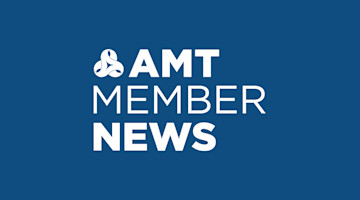At the heart of every successful marketing campaign lies one thing: a strong segmentation strategy.
And at the heart of a strong segmentation strategy? The right questions.
For example: Why does my customer want to buy new capital equipment this year? What opportunities are they looking to capitalize on? What pain points are they trying to avoid? How can I meet needs that they may not even be aware of?
Answering such questions will help you understand your audience and power your segmentation strategy, allowing you to deploy your limited resources more effectively.
Here are six steps to a successful segmentation strategy that you can use, regardless of your industry or business size. To illustrate these steps, let’s turn to the marketing strategy for IMTS – The International Manufacturing Technology Show, the largest trade show in the Western Hemisphere.
Step 1: Clarify Your Business Objectives
To improve your segmentation strategy, understanding a particular market or segment is not a specific enough goal. You must be able to articulate what that understanding will unlock. Do you want to focus your sales team on where regional trends drive the most revenue? Or make inroads into a new segment? Or attract more attendees to your event?
Building off our IMTS example, IMTS hosts domestic and international attendees from various industries – job shops, aerospace, medical, defense, automotive, and others. In designing an IMTS marketing strategy, we need to prioritize efforts across various demographic (individual-specific identifiers, such as job role or gender) and firmographic categories (company-specific identifiers, such as industry or company size) as well as behavioral data (customer-specific actions, such as purchasing history, browsing data, or campaign engagement) and psychographics (the “why” behind an individual’s behavior, such as personality traits, lifestyle, or values).
In this case, our business objective is twofold: 1) to provide an exceptional customer experience and 2) to grow the IMTS community, both by fostering in-person show attendance and online community growth. A deep understanding of our audience’s firmographic, behavioral, and psychographic intersections fuels both objectives.
Step 2: Define Your Key Market Questions Based on Your Business Objectives
Now that we understand our core business objectives, we can drill down further into the questions that segmentation will answer.
To set and prioritize our target segments for IMTS, we examine how demographic, firmographic, behavioral, and psychographic categories interrelate. For instance, a job shop owner on the East Coast whose customer base is a mix of aerospace, defense, and medical will have different equipment needs and buying cycles than a production engineer at an automotive OEM in the Midwest. From a behavioral and psychographic perspective, they may consume media differently, have different linguistic profiles, and prefer distinct communication channels. We need to understand how those segments differ (and relate) as individuals, as well as how macro trends influence their industries.
Understanding this allows us to effectively segment and personalize our inbound marketing efforts and prioritize them accordingly.
In this case, the question we want answered is:
How can I understand the unique needs of a potential IMTS attendee at the firmographic, behavioral, and psychographic level, so that I can best 1) prioritize marketing efforts, 2) personalize outreach at scale, and 3) provide the best customer experience for each attendee based on their needs?
Step 3: Identify Your Data Sources
To answer this question, we first identify data sources that would best help us answer it. In this case, an analysis of government data sources provides us with projected trends on facility expansion and employment growth by industry, and an analysis of data from the U.S. Manufacturing Technology Orders (USMTO) statistical program provides insights into equipment consumption by industry. Administered by AMT – The Association For Manufacturing Technology, the USMTO program collects data on the demand for manufacturing technology in the United States, Mexico, and Canada.
We can continue to pull in additional data points to deepen our understanding. For instance, we can use data from IMTS Exhibitor Passport to understand equipment buying preferences. A marketing tool available for IMTS exhibitors, IMTS Exhibitor Passport provides access to an opt-in list of current and previous IMTS attendees, segmented by factors such as industry, region, and equipment interest. This tool can serve as a marketing platform and develop users’ understanding of manufacturing buying trends.
Step 4: Analyze Your Data and Prioritize Your Core Segments
Now that we have identified data sources, we can perform our analysis to gain insights to help us prioritize our segments and identify the best go-to-market strategy for each.
For instance, trends in employment or the number of facilities may indicate that the medical, aerospace, and defense industries will show varying levels of growth through 2026. Since these are all industries served by our job shop owner profile, we may expect that a persona with this customer mix will likely be in a buying cycle in 2026 and that we will need to shape our messaging to them accordingly.
We may also see that the forecast of the automotive market fluctuates wildly, perhaps due to a combination of tariff impacts, financing challenges, EV market dynamics, supply chain disruptions, and changing consumer behaviors. This tells us that, although automotive is an important segment of IMTS attendees, our production engineer may be more interested in learning versus buying in the upcoming show cycle. These insights can help us prioritize how we go to market for each segment.
We can go even further by layering in product interest data from IMTS Exhibitor Passport. Cross-sectioning IMTS Exhibitor Passport data by industry and equipment preference over two show cycles might show us that job shops have increased interest in automation solutions. This helps us further tailor the IMTS experience for our shop owner profile to highlight the solutions that may best resonate with that individual.
Of course, there is more analysis to be done. Still, industry and buying preference trends tell a nuanced story about how to best approach our job shop owner serving a portfolio of multiple industries and our production engineer at our automotive OEM. More importantly, they tell us how we might prioritize our outreach and spending for each audience based on their evolving needs.
Step 5: Reassess and Adapt Regularly
It’s important to note that this type of analysis is not meant to be static and should be revisited over time, particularly in industries where macro events could cause larger shifts. For instance, in our automotive example, if market projections became more positive, we would reconsider our industry projection and approach to our engineer, as buying needs may change.
Step 6: Leverage Partnerships To Accelerate Market Insights and Access
Partnerships are crucial for the success of an in-house marketer. You can’t handle everything yourself, and you will need to bring in resources either due to bandwidth limitations or a need for specialty expertise. Partners such as marketing agencies, media organizations, influencers or subject matter experts, and industry associations and trade groups can help you accelerate your growth, particularly if you work with a smaller team.
Choosing the right partner also requires understanding both your “why” and being tactical in the resources available to you. You may have access to more resources than you realize.
For instance, when considering the market research questions that we explored above, you can access complimentary market research services through your AMT membership. AMT Research Services has a range of industry expertise and access to proprietary datasets and market forecasts to conduct deep market penetration research. The top categories of research requests are used to achieve business goals related to strategic planning and development (38% of requests) or marketing and sales (22% of requests).
One of the more popular marketing requests pertains to building regional marketing and sales strategies. When it comes to regional analyses, most marketing and sales leaders want to understand:
Where is my customer, and in what concentration?
How can I effectively allocate my salespeople in that area?
Answering these questions allows marketing and sales leaders to effectively segment in real time.
Layering longer-term industry trend data on top of a snapshot of regional customer concentration can accelerate this analysis even further – by providing you with insights not only on how to allocate resources now but to plan for a long-term marketing and sales approach. Further tactical insights on regional sales strategies and sales training can also be found at events such as the Distribution Summit, occurring Nov. 18-19, 2025, in Carmel, Indiana.
Case Study: One Member’s Journey Into the Live Tooling Market
When Larry Robbins, president and CEO of SMW Autoblok, was asked by his European parent company to evaluate the U.S. market for live tooling, he knew the stakes were high. Their longtime importer was preparing to exit the business, and the company needed to understand whether it made sense to reenter the market directly.
“I had to do the research before I agreed to it,” Larry said. “Because I’m the reason we don’t currently sell this product directly. I needed to be sure before I recommended moving forward.”
He leveraged his AMT membership, turning to AMT Research Services to dig into the numbers. His custom research request focused on identifying the number of machines sold in the United States with live tooling or driven tools, whether static or dynamic. What he received from AMT went far beyond a data dump.
“It wasn’t just numbers of machines,” Larry explained. “It was driven-tooling volumes, machine types, deeper context. I had more information available to me than what I could have gotten anywhere else, and I didn’t pay anywhere near what other platforms would have cost.”
Larry credits the AMT research team for not just supplying the data but also helping him think differently.
“They asked questions I never would’ve thought to ask. The interaction was amazing. I’ll say it again: They gave me more than I ever dreamed they would.”
The data proved vital. When Larry returned to his parent company with the research in hand, the reaction was immediate. The quality and cost-effectiveness of the work made an impression far beyond what a typical third-party report might accomplish.
“They just kept looking at me like, ‘Larry, how do you have all this?’ Right up until the end of our visit, they were still trying to understand how I pulled together this level of detail.”
For Larry, the experience was a reminder of the value of having a trusted partner. “They provided information far above and beyond anything I ever expected,” he said. The project didn’t just answer whether to reenter the market; it built confidence in the decision-making process itself.
Parting Thoughts: Data Is a Tool, Not an Answer
Asking the right questions will help you achieve the data points that are the foundation of a strong segmentation strategy. The insights you take away from that data (and what you do with it) matter most. Keep your long-term goals as a North Star, prioritize ruthlessly, and keep an eye on the macro climate so you can continue to adapt. This will ensure you create a segmentation strategy to achieve your business objectives and, importantly, drive long-term growth and customer satisfaction – or even gain a few more registrants to an industry event.
More information on IMTS: AMT hosts IMTS - the International Manufacturing Technology Show every two years, with IMTS 2026 coming Sept. 14-19, 2026, at McCormick Place in Chicago.
To read the rest of the Sales & Marketing Issue of MT Magazine, click here.






